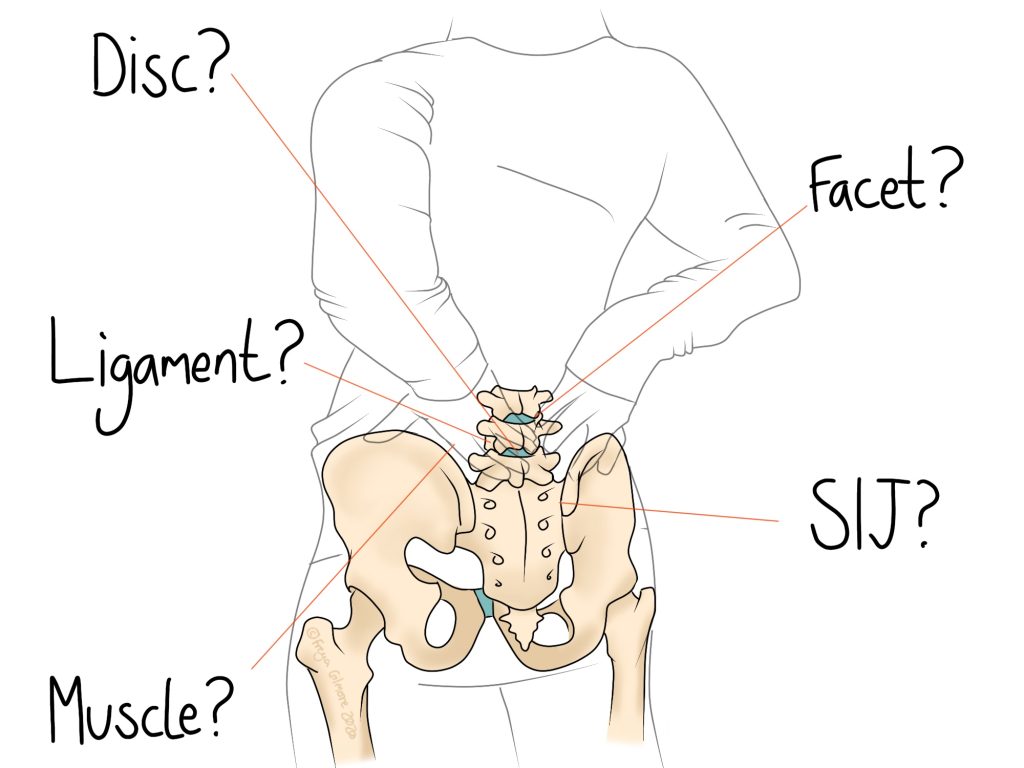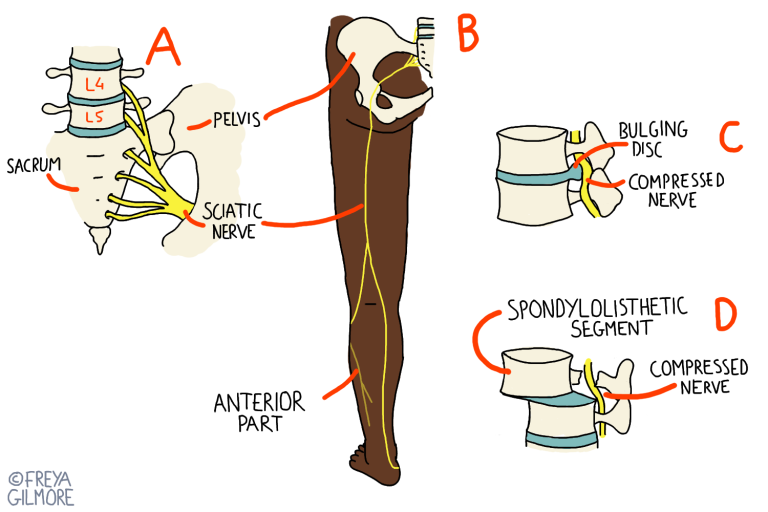Lower back pain is one of the main complaints that brings patients to clinic, and it’s also a leading cause of sick days. In the vast majority of cases, the cause is benign, but your osteopath can identify any red flags and refer on where necessary. For the more straight forward cases, we can diagnose and treat without the need for any external interventions.

Diagnosing Lower Back Pain
It is your osteopath’s first job to work out whether you’re safe to treat, or if we need to send you to a doctor. We do this by the combined information from:
- your medical history and what you tell us about your pain
- the way you move
- our findings on examination
We don’t have access to x-rays or MRI machines, but we do have a range of orthopaedic tests to help us develop a more specific diagnosis, or to rule out more concerning diagnoses like broken bones, infection, or undiagnosed rheumatological issues.
Non Specific Lower Back Pain
Sometimes, it’s impossible to determine the exact cause of your pain. Even with access to the best diagnostic tools, we know that an image cannot be used to form a diagnosis without any additional information. By the age of 40, over 50% of the general population would have at least one bulging disc according to MRI. But fewer than 50% of 40 year olds have back pain consistent with a disc injury. Imaging might feel like the tool that trumps everything else- but really it’s just another piece of the puzzle.
Non-Specific Lower Back Pain (NSLBP) is a term used to encompass a number of potential diagnoses that might cause back pain. Because it’s not always possible to differentiate between these causes, the NSLBP diagnosis helps us to be correct, if not as specific as we would like. Fortunately, the similarities between the causes mean that they respond to similar treatments. The causes that come under the umbrella of NSLBP include:
- mild disc injuries
- facet joint irritation (joints within the spine)
- mild ligament sprains
- sacroiliac joint irritation (the joint between the pelvis and spine)
- muscle strains
- early osteoarthritic changes
Beyond the NSLBP umbrella, we can also help with sciatica and pain relief from rheumatological conditions.
How We Can Help
All of the above problems benefit from gentle movement and reduced load. So a treatment plan that helps to get the lower back moving, and resolves any restriction elsewhere will help.
Osteopaths use gentle, hands on techniques to help you to manage your pain. We look at the body as a whole to work out the factors involved in your case, and work on them accordingly. Treatment could involve gentle stretches, massage, joint mobilisation, or manipulation (also known as “clicking”). You can expect to leave clinic with a good understanding of your diagnosis and plan of action. Most patients will be given exercises and other advice to aid their progress between appointments.
Call 07584 570348 to make an appointment for your back pain in and around Bristol

